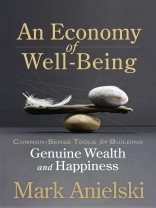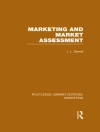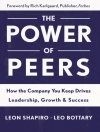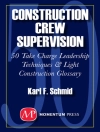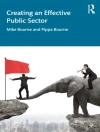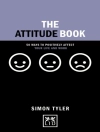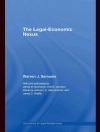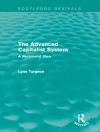Help build a world based on flourishing well-being for both the human family and nature
In the face of political, financial, and environmental upheaval, it’s difficult to slow down and build lives of mindfulness and joy. These things are within reach, but how can we go about creating a new world, using common-sense economics?
In An Economy of Well-being, author Mark Anielski presents a practical guide for building a new economy of well-being to help communities and nations become more flourishing and happier places to live. In this follow-up to his best-selling The Economics of Happiness, Anielski addresses key questions including:
- How can our personal and family assets be strengthened for a more fulfilling life of meaning and purpose?
- How can neighborhoods and cities become flourishing economies of well-being by making the best of abundant community assets?
- how can organizations, communities and financial institutions measure, manage and finance assets to achieve high levels of well-being?
An Economy of Well-being responds to a common yearning for common-sense tools to orient our lives, our businesses, and our communities towards well-being. This is ideal reading for anyone who wishes to contribute to building happier, more mindful communities, and ultimately lives of joy and meaning.
สารบัญ
List of Figures
Foreword
Introduction: A New Economic Paradigm Based on Well-Being
1. Reclaiming Economics for Happiness
Reclaiming the Language of Economics
Happiness: Well-Being of Spirit
A New Index of Well-Being
Measuring Well-Being Objectively
Alberta’s Economic Growth, Disease and Income Inequality
Exposing the Myth of Productivity
Measuring Happiness is All the Rage
People Prefer Happiness Over Wealth
Who Are the Happiest Canadians of All?
Happiness as the Ultimate Objective of Economic Development
From Financial Capitalism to Well-Being
Drowning in Debt
The Inconvenient Truth: How the Hidden Costs of Debt are Killing American Happiness
The Path Ahead
2. A Roadmap to Well-Being
Can Well-Being Be Measured?
The Science of Well-Being: What We Measure Affects What We Do
Maslow’s Hierarchy of Needs and an Indigenous Model of Well-Being
The Util: Measuring Real Utility
Without Virtue, Happiness Cannot Be
The Five Capital Assets of Well-Being
Well-Being Accounts
The Five-Assets Sustainable Livelihood Model for Measuring Assets
The Well-Being Economy and UN Sustainable Development Goals
Well-Being-Based Governments
3. Bhutan, Edmonton and Alberta: Models of Well-Being Economics
Back to Edmonton: The City that Could
The Promise of Alberta
Alberta’s Preliminary Asset Accounts
4. The Well-Being Community
The Edmonton Social Health Index
Measuring the Well-Being of Valleyview, Alberta
Edmonton’s Well-Being Index and Measuring the Well-Being Return on Taxes
Community Asset and Well-Being-Impact-Based Governance
Well-Being-Based Governance and Budgeting
Designing a New Economy of Well-Being for Tahiti (French Polynesia)
5. Well-Being for First Nations
Measuring What Matters to Community Well-Being
Why a Community Asset Assessment?
Natural Capital Assessment
The Well-Being Community Planning Process
Benefits of a Well-Being-Based Approach to Community Development
6. The Well-Being Workplace
Well-Being at Work
Businesses That Operate on Well-Being Principles
The Well-Being Corporation
Doing Well By Doing Good: The Flourishing Well-Being Enterprise
Well-Being: The Best Interest of Business
A Corporate Culture of Well-Being
Well-Being By Design
7. Accounting for Enterprise Well-Being
The Origins of Auditing
Toward Quality-of-Life Auditing and Accounting
Well-Being Inventory
Five Assets of Enterprise Well-Being
Measuring Workplace Well-Being
Enterprise Well-Being Index
True Pricing: Full-Cost Accounting
Making the Business Case of Well-Being
Asset Valuation and Verification with Well-Being in Mind
8. Well-Being Impact Investing
Virtuous Financial Leadership
Lintel Capital LLC: Investment for Good
Well-Being Impact Investment Funds
And the Times, They are a-Changin’
9. The Community Asset Well-Being Fund
Eliminating Poverty in Cincinnati within a Generation
10. Banking on Well-Being
All Roads Lead to London: The Queen’s Banker’s Wife
Freeing Economies of the Burden of Interest from Debt-Based Money
A Public Bank for Well-Being
What is a Public Bank and Could It be Structured to support the Economy of Well-being?
The Bank of North Dakota and ATB (Alberta Treasury Branch): The Most Important Public Banks in North America
Alberta Treasury Branch: North America’s Best Kept Secret
Why Could ATB Financial Become the Model for Public Well-Being Banks Across North America?
The Future of Money: Well-Being Currency
11. Personal Well-Being
Well-Being is a Choice
Money, Your Life and Happiness
Epilogue
Index
About the Author
About New Society Publishers
เกี่ยวกับผู้แต่ง
Mark Anielski is an economist, consultant and Adjunct Professor in both the School of Business, University of Alberta and the Bainbridge Island Graduate Institute. He was named a ‘rising star’ amongst international progressive economists by Adbusters magazine in 2004, and awarded the 2004 ECO Award for his work on the Genuine Progress Indicator.
